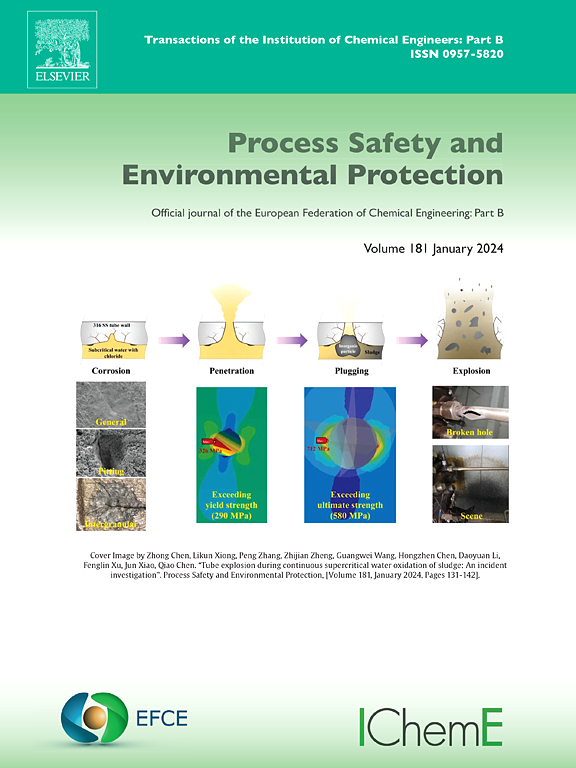典型混凝沉降与接触絮凝工艺处理高浊度矿用水的性能对比研究
IF 7.8
2区 环境科学与生态学
Q1 ENGINEERING, CHEMICAL
引用次数: 0
摘要
本研究的主要目的是开发一种接触絮凝处理工艺来去除三种高浊度矿井水(HTMW)的浊度,探索不同絮凝剂、投加量、过滤材料和过滤速率对浊度的影响。采用了四种不同的接触过滤介质:有源过滤介质、纤维球过滤介质、PET泡沫过滤介质和彗星状过滤介质。结果表明,PAC和PAM预处理可使HTMW的浊度降至 40TU, PAC和PAM的最佳絮凝剂投加量分别为1.92 mg/L和0.0021 mg/L。此外,在HTMW的实际试验中,活性过滤介质在稳定性和浊度降低方面被证明是最有效的,推荐厚度为43 cm,过滤速率为40 m/h。在最优条件下,对实际矿山废水(MW1、MW2、MW3)进行处理,出水水质达到中国地表水水质ⅲ类标准,浊度为<; 5 NTU,适合进一步处理。本文章由计算机程序翻译,如有差异,请以英文原文为准。
Comparative study on the performance of typical coagulation-sedimentation and contact flocculation technology in treating high turbidity mine water
The main purpose of this study was to develop a contact flocculation treatment process for removing turbidity from three types of high turbidity mine water (HTMW), exploring the effects of various flocculants, dosages, filter materials, and filtration rates on turbidity reduction. Four different contact filtration media, named active filter, fiber ball filter, PET foam filter and comet-like filter were used. The results indicate that pretreatment with PAC and PAM can reduce the turbidity of HTMW to< 40TU, and the optimal flocculant dosages for PAC and PAM are 1.92 mg/L and 0.0021 mg/L, respectively. Besides, active filter media proved most effective in stability and turbidity reduction, with a recommended thickness of 43 cm and filtration rate of 40 m/h during the actual tests using HTMW. Under optimal conditions, the actual mine wastewater (MW1, MW2, MW3) was treated, and the effluent quality met the Class III standard for surface water quality in China, achieving a turbidity of < 5 NTU suitable for further treatment.
求助全文
通过发布文献求助,成功后即可免费获取论文全文。
去求助
来源期刊

Process Safety and Environmental Protection
环境科学-工程:化工
CiteScore
11.40
自引率
15.40%
发文量
929
审稿时长
8.0 months
期刊介绍:
The Process Safety and Environmental Protection (PSEP) journal is a leading international publication that focuses on the publication of high-quality, original research papers in the field of engineering, specifically those related to the safety of industrial processes and environmental protection. The journal encourages submissions that present new developments in safety and environmental aspects, particularly those that show how research findings can be applied in process engineering design and practice.
PSEP is particularly interested in research that brings fresh perspectives to established engineering principles, identifies unsolved problems, or suggests directions for future research. The journal also values contributions that push the boundaries of traditional engineering and welcomes multidisciplinary papers.
PSEP's articles are abstracted and indexed by a range of databases and services, which helps to ensure that the journal's research is accessible and recognized in the academic and professional communities. These databases include ANTE, Chemical Abstracts, Chemical Hazards in Industry, Current Contents, Elsevier Engineering Information database, Pascal Francis, Web of Science, Scopus, Engineering Information Database EnCompass LIT (Elsevier), and INSPEC. This wide coverage facilitates the dissemination of the journal's content to a global audience interested in process safety and environmental engineering.
 求助内容:
求助内容: 应助结果提醒方式:
应助结果提醒方式:


